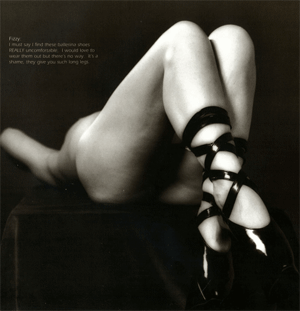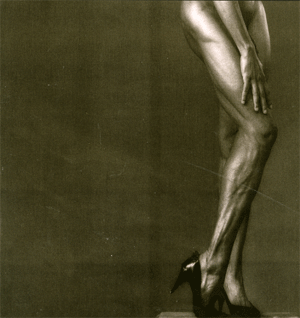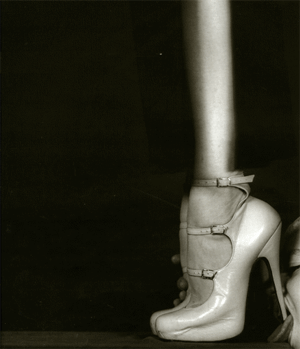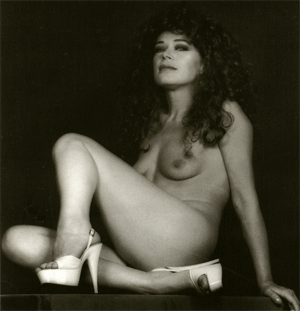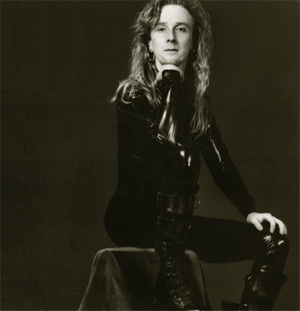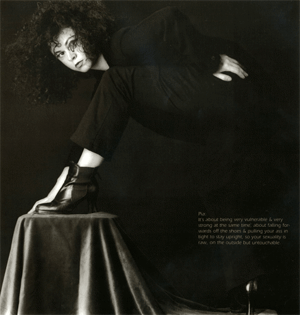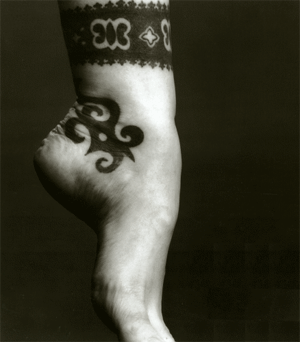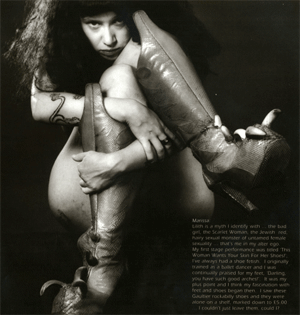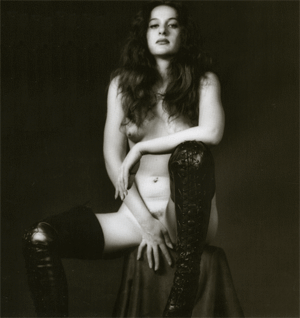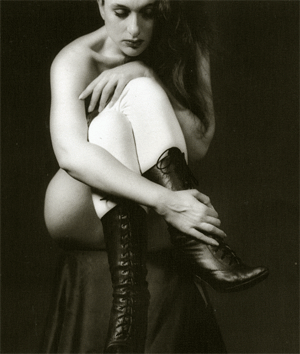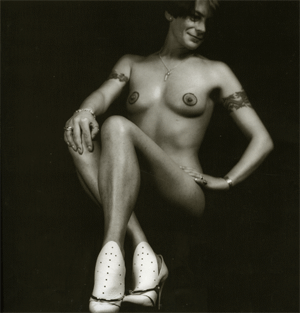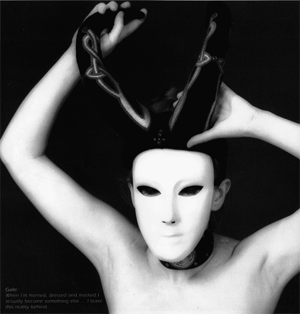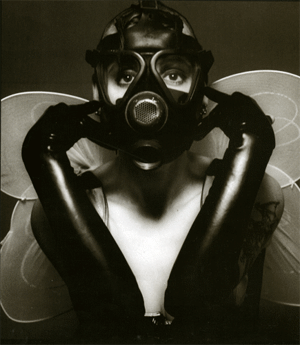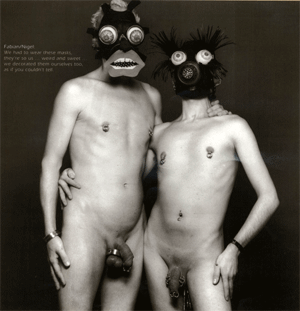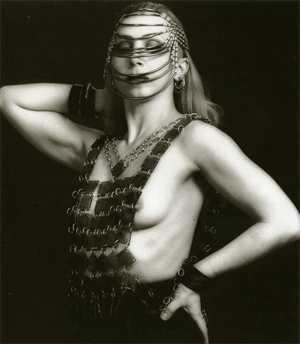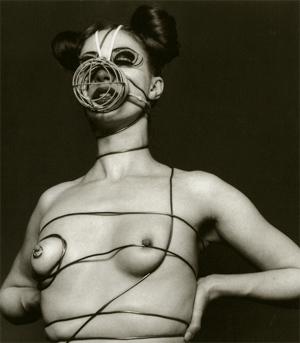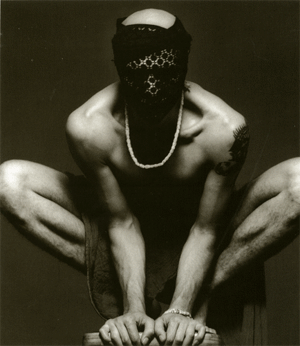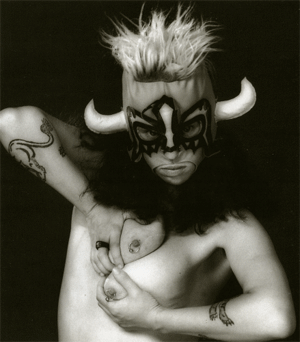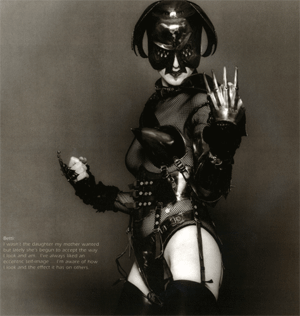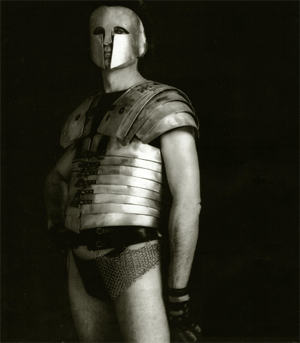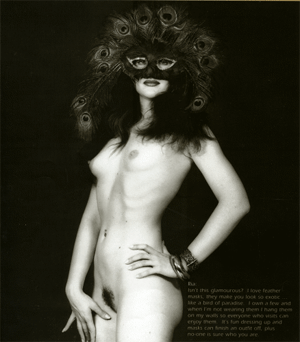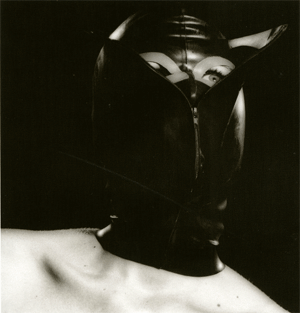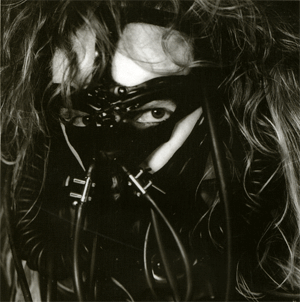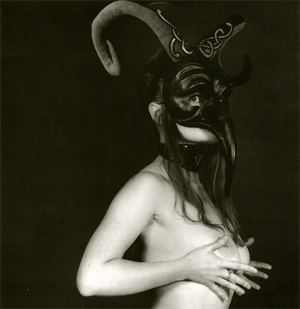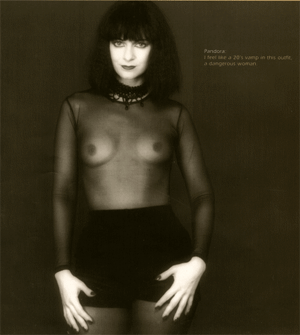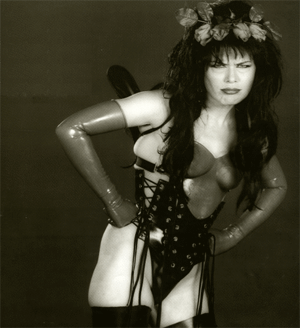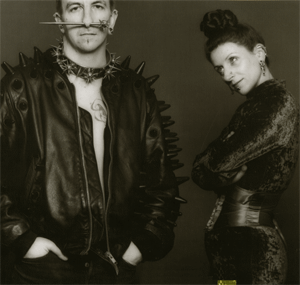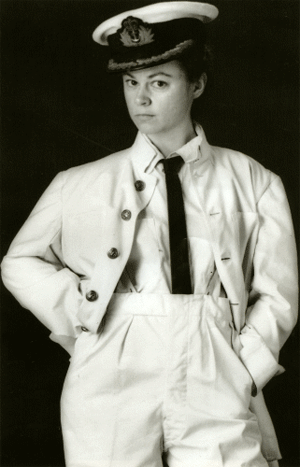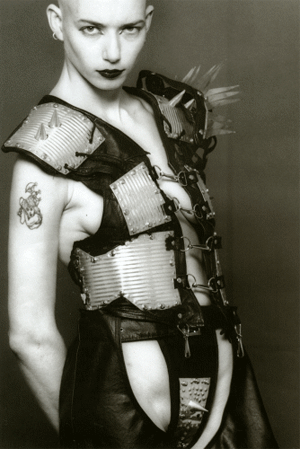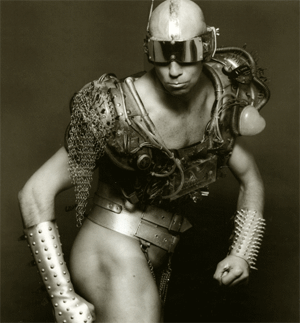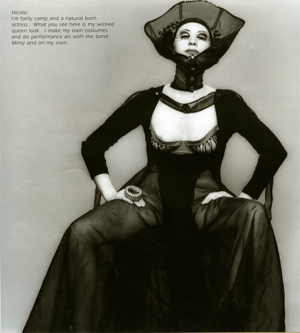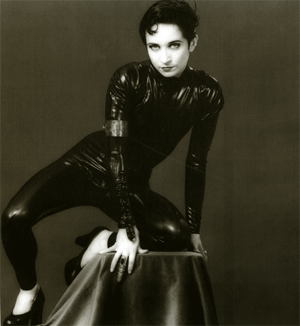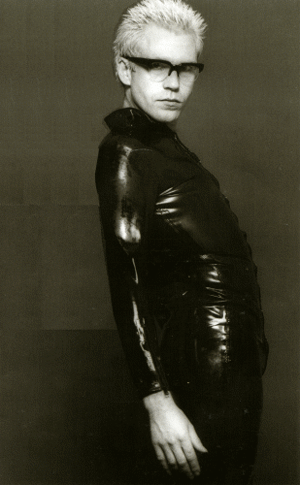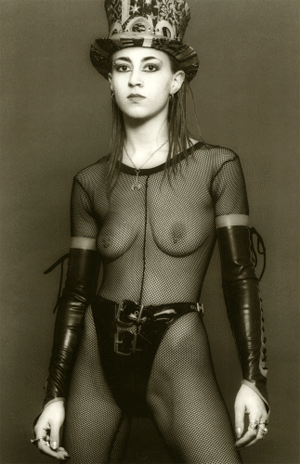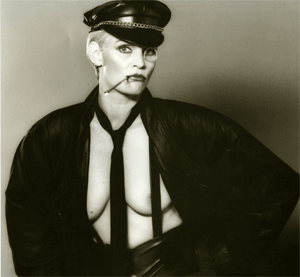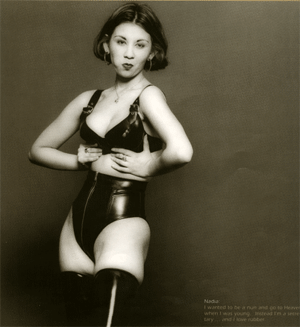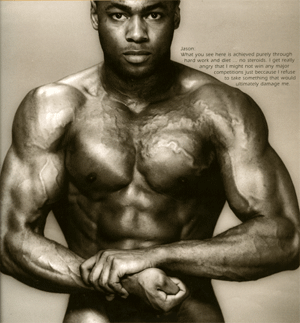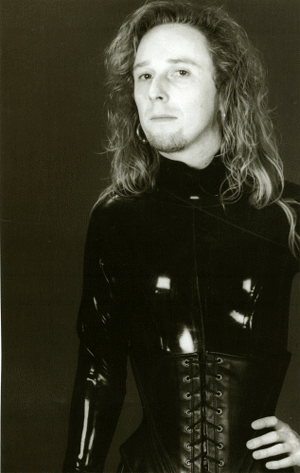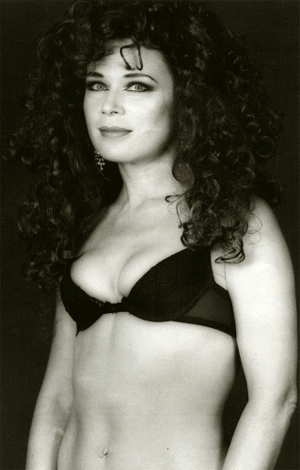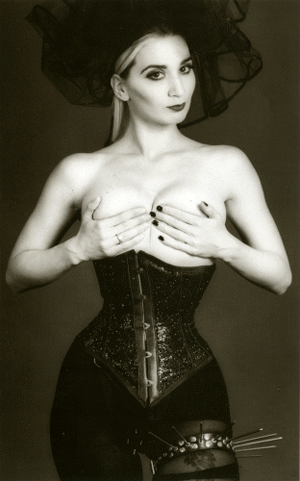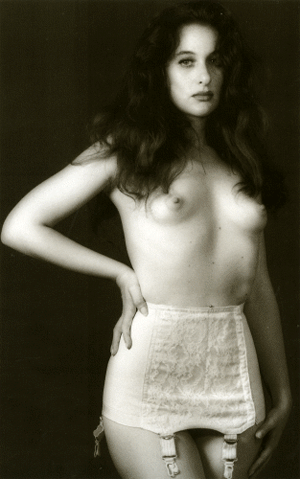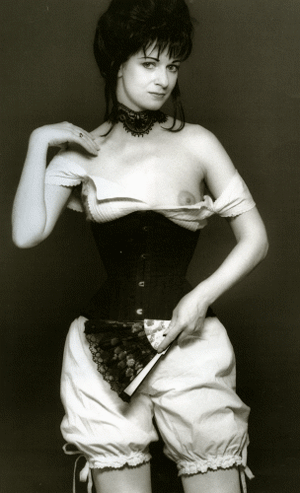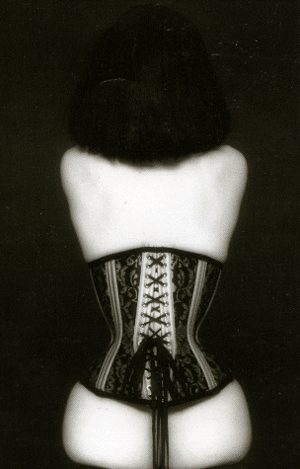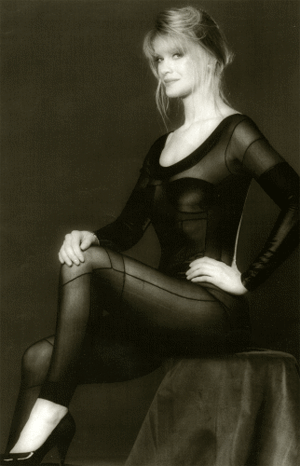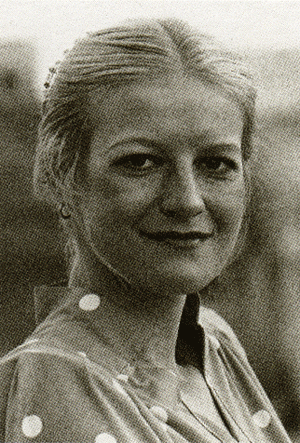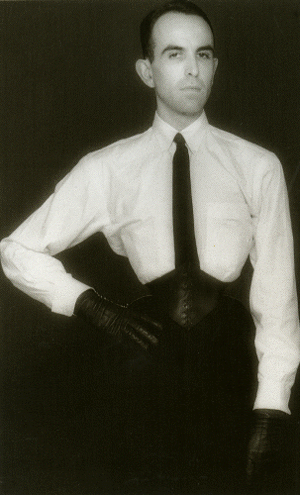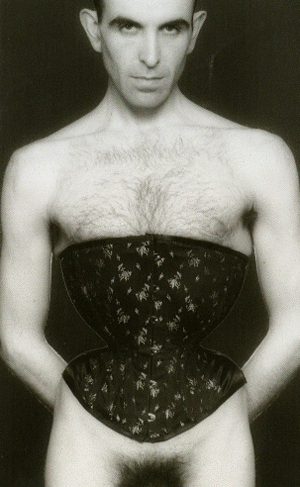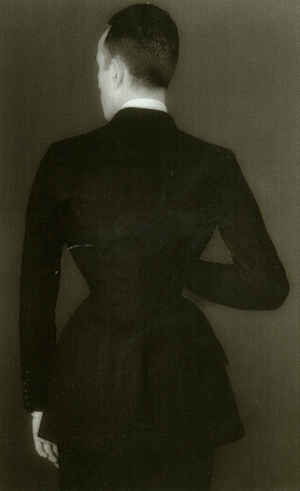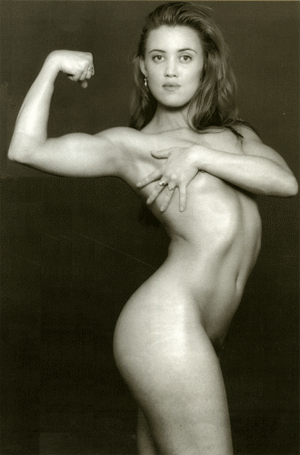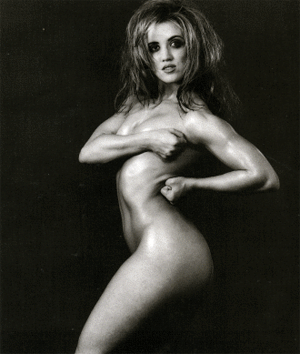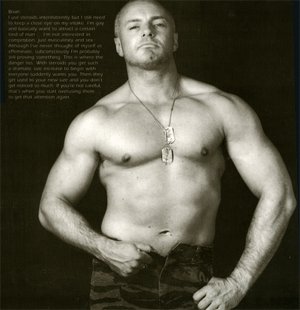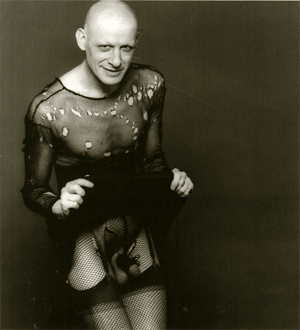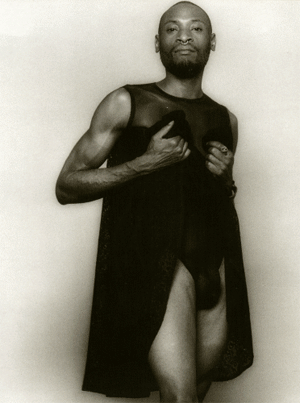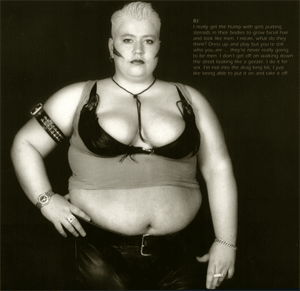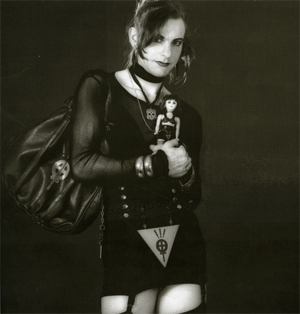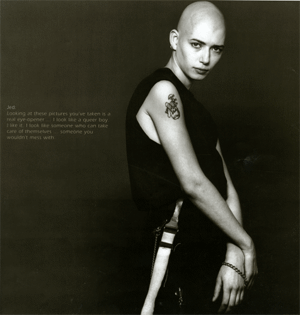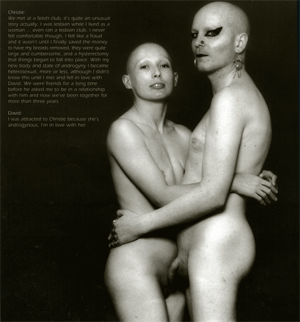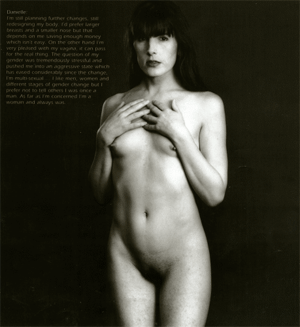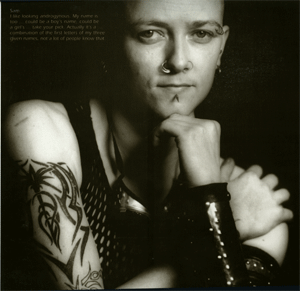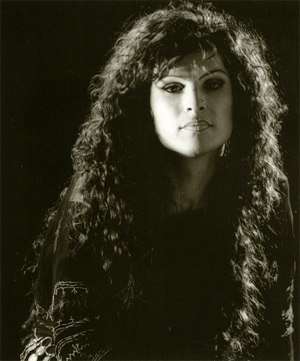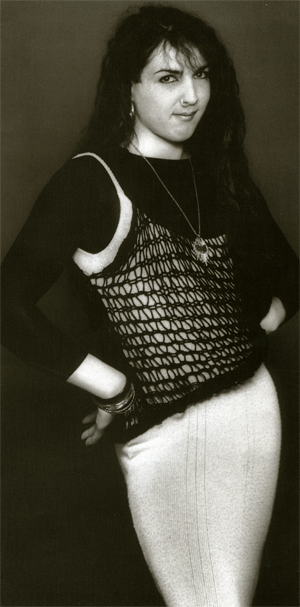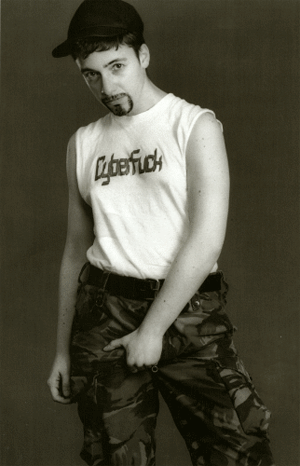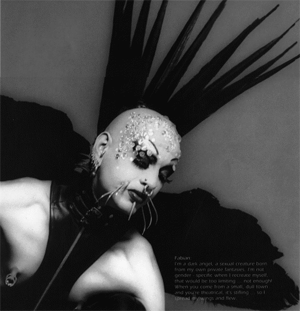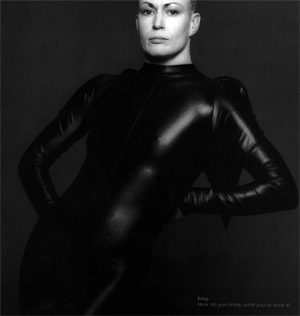GENDER TRANSFORMATION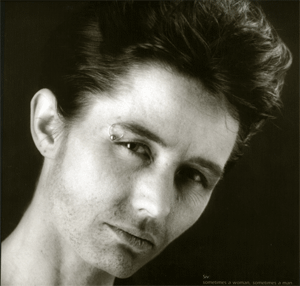 Siv: Sometimes a woman, sometimes a man.
Siv: Sometimes a woman, sometimes a man.The human body has traditionally be available in two basic models: male and female.
That it is now possible to transform a male body into a female body (and, less easily, the reverse) would surely amaze tribal and peasant peoples -- even those who have perfected and take for granted those, often astoundingly, bodily transformations previously discussed in this book. But however technically advanced, these operations should be seen as a different kind of customizing of the body than previously considered body arts like tattooing, scarification, piercing or adventurous hairstyling.
To stretch the neck beyond its natural length, to shape the skull into a point or even to simply paint the skin blue with pink spots is to boldly go where human biology never foresaw nor intended. To re-shape a male penis into a female vagina is, on the other hand, to remain completely within the definition of the natural body. One biologically defined body is simply being substituted for another. As with almost all of Western plastic surgery, physical 'gender reassignment,' while an extremely artful technique, isn't a body art which incorporates a creative, imaginative leap beyond genetically determined physical reality. As with a 'nose job' or a 'tummy tuck,' the objective, the ideal, is that the transformation of the body involved should be invisible and undetectable. While the individual transsexual is transformed, no new -- artificial and hence 'artistic' -- model of human appearance results.
This distinction has important -- practical -- ramifications. Focusing on gender as a physiological phenomenon, a matter of genitalia, breasts and buttocks), gender reassignment neglects the enormous extent to which gender is a cultural phenomenon. To be a man or a woman in, say, New Guinea, Bali or the Amazon is a very different matter from being a man or a woman in our own society.; And, indeed, the same is true of Western society in previous centuries. By focusing on gender as a purely physical matter -- and by proposing a purely physical 'solution' -- we side-step a crucial question: isn't it possible that it is our culture's definitions of 'masculinity' and 'femininity' which are urgently in need of reassignment?
Human beings have always constructed separate, distinctive 'male' and 'female' identities. Differing from one society to the next, one era to the next, such identities are learned rather than genetically inherited. Is there a physiological bottom line of gender, a universal territory of maleness and femaleness which is found in all societies? Perhaps, but what is undeniable is that most of what we label as 'typically male' or 'typically female' derives from the specific social and cultural world which an individual happens to be born into.
Speech, gait, posture, gesture and so forth all play an important part in any society's construction of 'male' and 'female' identity. But it is different rules and possibilities for customizing the appearance of the body which most immediately and vividly sets the sexes apart -- thereby introducing yet another important function of body decoration and adornment.
For example, amongst the Nuba it is males and only males who spend long hours painting intricate designs on their bodies while it is females and only females who have detailed patterns of scarification etched into their skin as they progress through life. In societies where clothing is worn differences of dress (for example, trousers for men, dresses for women) also serve to visually differentiate the sexes. Whatever the medium used -- paint, scarification, hairstyles, piercings, neck stretching, attire, etc. -- there is always some distinctive feature of how the body is customized which signals that someone is a 'real man' or a 'real woman.'
The purpose of such visual differentiation, however, extends far beyond that of simply distinguishing one sex from another. Indeed, in societies where clothing is minimal, tightly fitting or non-existent, there is no need for such visual coding -- nature's own gender indicators performing this task perfectly well. Rather than just signalling 'This is a man/woman' the real function of gender-specific adornment or dress is to give some symbolic clue to how a particular society defines masculinity and femininity in a broader sense. That is, in any society the differences between 'proper male attire' and 'proper female attire' underline and define key assumptions concerning 'proper male behaviour' and 'proper female behaviour.' Compare the two styles and what results is an instant visual guide to 'proper' relations between the sexes as defined by that culture.
For example, it is apparent from the differences of male and female body decoration amongst the Nuba that they view males as more creative and individualized than females (who must conform to and accept decorations which are as uniform and traditionally determined as they are permanent and painful). Likewise, in our own society, the (now rather old-fashioned) view that women should wear draping dresses or skirts while men alone can wear bifurcated trousers implies -- and, indeed, imposes in a very practical sense -- limitations on what sort of activities are and are not suited to women. At the same time, our society's traditional view that women and not men can be highly adorned and decorated (a subject we will return to in a moment) underlines an assumption that men are more 'practical' and 'serious,' women more 'frivolous' and 'superficial.'
In this way gender-specific differences in the customized body function as indicators not only of what sex a person is but also as a symbolic expression of the culture's definition of 'masculinity' and 'femininity.' In short, differences in how the body is transformed according to gender serve to define -- to express, visualize, represent and explore -- gender itself.
For this reason, whenever someone challenges and refuses to comply with their society's rules of what a male or female should look like they are challenging far more than simple aesthetic principles. As in the recent, Western instances of female 'Bobby-soxers' in jeans, male Hippies with long hair or male Glam Rockers or Goths in make-up, it is the very definitions of 'male' and 'female' which are being questioned -- as is, ultimately, the significance of gender.
Many traditional societies, rather than belligerently resisting such 'gender bending,' found ways of accommodating and even institutionalizing it. Most famously, in a wide band of North American Indian tribes stretching across most of the Plains and the Prairies, those who wore clothing or adornment deemed appropriate for the opposite sex were simply reclassified in a sort of 'Third Sex' category known as the berdache. Included here were males who dressed in female attire, females who dressed in male attire and members of either sex who chose some blend of the two styles. Instead of being ostracized, berdaches were generally afforded a higher status -- being typically seen as spiritually powerful individuals. Likewise in many parts of India, the hijra (transvestite or eunuch males) are traditionally given special spiritual duties which are believed to confer good fortune on a newly born male child and its family.
The point is that those who defy the rules of a culture's definition of appropriate male or female customized appearance can either be classified as a positive or a negative anomaly. In the West it is, of course, usually the negative reaction which is most typical. At least in recent times, this has been especially true when men have adopted those forms of adornment and dress traditionally associated with women. While once even female athletes were ostracized if they dared to wear trousers or, heaven forbid, shorts, this battle has now been largely won and a woman in leggings or jeans is seen as completely normal on all but the most formal social occasions.
A man in a dress, stilettos and make-up, on the other hand, is still likely to be harshly ridiculed. Unless, of course, 'she' is a model or an entertainer. In which case the negative flips into the positive to confer a special status which isn't that far removed from that of the Native American berdache or the Indian hijra -- conferring in some instances (e.g. Quentin Crisp, Bowie, RuPaul, Winston, George O'Dowd) not only fame and fortune but even a certain aura of spiritual or magical power.
For the ordinary man in the street, however, skirting with feminine attire and adornment remains a risky business. While the same might well be said of men in most traditional societies (a Nuba male who wanted to indulge in scarification rather than body painting would no doubt have a very hard time of it) we Western males face a particularly acute problem because our society's views on appropriate male appearance are so unusually restrictive.
It was not always so. UP to the time of the French Revolution the Western definition of masculinity gave plenty of scope for painting and preening and generally exploring in a creative way the expressive possibilities of the customized body. After the French Revolution (in part because the bourgeoisie wanted to distance itself from the excesses of the aristocracy by emphasizing boring, bland respectability) Western men suffered what the social psychologist J.. Flugel has termed 'The Great Masculine Renunciation' -- that is, a renunciation of what was once called 'finery' and which included everything from the use of bright colours in dress to exotic hairstyles, the use of make-up to the wearing of sexy shoes. The result was what might be termed The Invisible Man -- a creature strangely cut off from that long and wonderful history of the human body as a medium of creative expression and artistic experimentation.
As we have seen time and time again throughout this book it is more often than not the male of our species who has delighted in the status of 'peacock.' 'The Great Masculine Renunciation' of the West has effectively excluded men (and, with ever increasing Westernization, this now includes practically all male Homo sapiens) from that arena of bodily expression which -- as this book has tried to show -- constitutes a primary, fundamental and necessary component of human behaviour.
While the great majority of men have simply accepted this state of affairs (probably not even realizing their loss) a minority have fought back. Dandies, Hipsters, Bikers, Mods, Hippies, Psychedelics, Glam Rockers, Punks, New Romantics, Rappers, Ravers, Modern Primitives and others have all pushed against the restrictions on male adornment which Western society has decreed to be 'normal.' Battles have been won but the war is far from over. Despite enormous media excitement about 'unisex' and 'gender bending' it is still the case that a man on the street wearing, say, a bit of eye shadow or lipstick (our society's last preserve of the ancient art of body painting) risks verbal harassment at the very least.
Faced with this situation many Western males have simply opted to switch their gender identity -- either temporarily in the form of the transvestite or permanently in the case of the transsexual. While the latter option -- that of actually, physiologically switching one's gender -- has only been available in recent times (the first successful male to female 'sex change' was performed in the 1920s) the former option, a substitution of the adornments, attire and mannerisms associated with one gender for that of the other, has probably existed throughout human history. There have always been and presumably will always be a small percentage of people (both males and females) who grow up feeling that their true self is 'trapped' in the body of the opposite sex. What is, however, noteworthy about transvestism in our contemporary world is its dramatic and ever-increasing impact on mainstream society.
In the cinema, the theatre, popular music, club culture and the phenomenal success of events like New York's 'Wigstock' festival, we see evidence of a pervasive preoccupation with transvestism -- with the 'drag queen' a (perhaps the) key iconic image of our age. To some extent, this simply -- but significantly -- reflects our culture's growing confusion and concern about gender identity itself. As the consensus which existed only 20 or 30 years ago about what is 'typically male' or 'typically female' has been questioned and challenged, our culture (and, ultimately, we as individuals) enter a period of 'gender crisis.'
While spotlighting the transvestite as a popular icon, this contemporary 'gender crisis' has also prompted another response -- one that is less imitative and straight-forward, more complex and potently creative. Increasingly, literal cross-dressing has given way to a freer, less stereotypical, approach which simply ignores categories of 'male' and 'female' style altogether. Both within and without the 'Drag Scene' (for example, amongst 'Modern Primitives' and the 'Fetish Scene' as well as amongst so many of those flocking to New York's 'Wigstock' or clubs like London's 'Kinky Gerlinky') one today finds more and more men who are experimenting with ways of adorning, decorating, dressing and customizing themselves which, while defying traditional Western notions of masculine appearance, are also largely outside our traditional notions of femininity. Instead of simply switching male for female attire, these 'Angels' (for like the biblical creatures they are not men and not women) are creating a 'Third Sex' -- one which embraces all and every possibility of the customized body.
As with all stylistic revolutions, this reflects an important ideological shift: the growing view that personality and potential are not -- or need not be -- defined or limited by one's sex. Weaving together arguments put forth by feminists, Gays and Lesbians, those within the ever growing ranks of "The Third Sex' are vividly translating new ideas about gender into visual reality.
This marks an entirely new development in the history of the customized body. While in all previous societies and eras your biological gender defined and restricted what you could and could not do to transform your body, a new age is slowly but steadily dawning in which your genitals may play no part in determining your appearance. And just as some men are kicking back the boundaries of 'The Great Masculine Renunciation' -- embracing peacock-like colour and 'frivolous' adornment -- some women are increasingly experimenting with body arts like tattooing which were once seen in the West as a purely masculine preserve. The phenomenal rise in body piercing combines both tendencies: males embracing a delight in jewellery which was previously seen as 'unmanly,' women going far beyond previous (Western) definitions of what constitutes 'feminine' adornment.
Incorporating so many ancient, pre-Western techniques of customizing the body -- irrespective of whether our culture defines them as 'masculine' or 'feminine' -- these modern-day 'Angels' mark a return to those 'primitive' visions of the body which have for so long been ignored or even denigrated in our culture. But, at the same time, such 'Modern Primitives' are in the forefront of a radically new approach to body decoration. Tribal societies -- indeed, all previous societies -- were founded on the principle of conformity. As well as gender, age, social role, family background, class, caste and so forth all limited appearance. Our present and future approach to the transformation of the body, on the other hand, is based on individual choice -- the customized body as an expression of unique identity.
In the past, what you were determined what you looked like. Today what you choose to look like expresses who -- or indeed what -- you would like to be.
The choice is yours.
